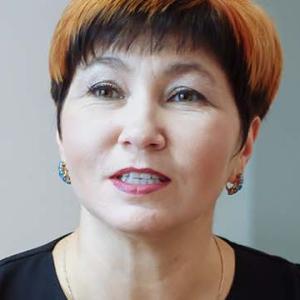Diversity and inclusion, or D&I as it’s often abbreviated, is a term often used to describe initiatives, cultures, strategies or action groups.
When we talk about D&I in this way, it’s possible to miss the nuances of both diversity and inclusion and the impact these two things can have on individuals.
The importance of diversity and inclusion in the classroom is that it’s about all students feeling a sense of belonging. That feeling of connectedness can create better mental health and learning outcomes.
Learn more about this important area below.
What is diversity and inclusion?
Diversity and inclusion refer to two things: first, the acceptance of diversity and differences in the individuals that make up a group, such as classrooms, and second, the inclusion of diverse group members in that group's activities.
Diversity simply means that the members of a group are not identical. Individuals come from different ethnic, cultural, or socio-economic backgrounds – it’s these and other differentiating factors that make us unique.
Our uniqueness can also give us an advantage or disadvantage compared to our peers. Inclusion is the practice of putting supports in place to lift all members of a group up to the same level. It’s about equity rather than equality.
Equality is a top-down approach where resources are divided equally among a group. Equity takes a bottom-up problem-solving approach and asks what support each person might need to eliminate avoidable or remediable differences within the group. The goal of equity is fairness.
Why is diversity and inclusion important?
The classroom provides one of the best scenarios to highlight why diversity and inclusion are important.
Imagine that you had a box of brand-new laptops set up and ready to go, and you handed one out to each student with a homework project. You have achieved equality, but have you achieved equity?
A student from a disadvantaged socio-economic background may have limited or no internet access at home to use the laptop. A student with a non-English-speaking ethnic background might not have support at home to troubleshoot an error message on the laptop.
In this simple example, it’s clear that inclusion could be improved by reflecting on the diversity of the classroom before distributing the laptops. Communication with students and parents before an action like this would highlight the need for support to achieve equity.
Benefits of diversity and inclusion in the classroom
When students experience diversity and inclusion in the classroom, they have an opportunity to learn from their peers, as well as alongside them. This experience fosters a broadening of horizons that can support and enhance the growth mindset in children.
The thinking behind the growth mindset is that we all have neuroplasticity – the ability to stretch and exercise our brain to learn new things. The opposite way of thinking is a fixed mindset, which views our intelligence as a static thing. That’s why some people might say things like, “I’m just not good at maths”.
By rejecting the fixed mindset, inclusion can be practised in the classroom with the view that all children can learn. When specific supports are provided for individuals to learn alongside their peers, students can personally experience the benefits of a growth mindset.
Diversity and inclusion in the classroom can also deliver social, mental, and physical benefits.
Social benefits
Cultural diversity is just one aspect of diversity, but it’s interesting to note that over a quarter of the Australian population were born overseas. From that statistic, it’s reasonable to assume that a large proportion of students in every classroom will have one or more parents or grandparents born overseas.
That high level of diversity is also present within Aboriginal and Torres Strait Islander people, who make up 2.8 per cent of the population. As the oldest continuing living culture in the world, Aboriginal and Torres Strait Islander people represent hundreds of traditional groups with diverse beliefs, practices, ceremonies, and customs.
With an inclusive culture in the classroom, students develop understanding, cultural awareness and skills that will assist them in their relationships throughout their studies and in a diverse workforce. On a broader level, these students can contribute to a positive and accepting society, which will benefit everybody.
Mental benefits
Be You is a free mental health resource for educators from Beyond Blue that sums up the mental benefits of diversity in two short sentences: “Belonging is a fundamental human need. Respect for diversity is related to people’s sense of belonging.”
If students feel that their family, cultural background and individual uniqueness are respected and valued by their teachers, peers and school, then they’re more likely to experience a sense of belonging and improved self-esteem.
The mental benefits of diversity and inclusion in the classroom also go beyond cultural differences. Young people are particularly vulnerable to experiences of exclusion based on any difference, and these encounters can have a negative impact on their mental health.
Be You confirms that feeling cared about and respected helps to protect our mental health and wellbeing.
Physical benefits
Many studies have shown that students who engage in regular physical activity perform better academically – not to mention the boost to physical and mental health. With diversity and inclusion in the classroom, these physical benefits can be enjoyed by all students.
A strength-based approach to physical activities looks for opportunities for individuals to use their strengths to participate – rather than focussing on the activity itself and reasons why individuals can’t participate. The Australian Sports Commission recommends the TREE model to modify activities for inclusion. The TREE model asks how we can adapt the teaching style (T), rules (R), equipment (E) and environment (E).
When the TREE model is implemented successfully, and students find activities interesting, meaningful and enjoyable, they’re more likely to voluntarily continue them outside of the classroom, which can lead to physical benefits for life.
Challenges to creating an inclusive classroom
The main challenge you might encounter in creating an inclusive classroom is knowing or understanding how to create inclusive opportunities for all students. Diversity acknowledges the individuality of students, including disability, English as an additional language (EAL), different backgrounds and more.
In addition, you may encounter other challenges from outside your classroom, such as whether your school has an inclusion policy. To prepare for such challenges, you might want to ask yourself and your colleagues if your school values and plans for diversity and inclusion.
Overall, one of the greatest challenges to being an inclusive classroom is funding resources to support inclusive teaching. However, you’ll be pleased to know that there are a few things you can do to improve diversity and inclusion without spending a cent.
How to improve diversity and inclusion in the classroom
As a teacher, the first move in improving diversity and inclusion in the classroom is yours. You can make a difference by respecting individual differences, modelling inclusive behaviour, and being welcoming and approachable.
The next step is education. Online resources such as the Student Wellbeing Hub provide videos from experts and other teachers, as well as a variety of resources on diversity and inclusion. The Australian Government’s Harmony Week website, SBS’s Cultural Atlas and Beyond Blue’s Be You all offer helpful tools on cultural diversity. The Australian Government’s NCCD Portal offers resources for making adjustments for students with disabilities.
By learning more about how to promote diversity and inclusion in the classroom, you can create a positive impact on learning outcomes for your students.
Why study the Master of Education, specialising in Educational Diversity and Inclusion?
You may be surprised to hear that Southern Cross University Online’s Master of Education offers a specialisation in Educational Diversity and Inclusion. It’s one of three specialisations, with the other two being Educational Leadership and Educational Wellbeing.
This masters degree is built on four core units that develop your understanding of educational leadership styles. The next four units are focused on student wellbeing, inclusive education, and valuing diversity.
Let’s take a closer look at what you will learn.
What you will learn
Beyond Blue’s Be You teaches that belonging is a fundamental human need.
In this Master of Education, you’ll learn how to develop strategies to facilitate connectedness, belonging, positive expectations, and opportunities for meaningful participation. In a unit called Enhancing Student Wellbeing, you’ll also reflect on ways to better support students' physical and mental health within your professional context.
Another unit focuses solely on Valuing Diversity. This will broaden your understanding of cultural, refugee and Indigenous perspectives in local, national, and international settings.
You’ll also embark on a critical reflection about inclusion, to define and justify an individual philosophy of Inclusive Education. In a unit called Inclusive Education, Theory, Policy, and Practice, you’ll plan for action on strategic priorities to advance the cause of inclusion in school settings.
Underpinning all these learnings is a critical analysis of using technology and collaboration to enhance Inclusive Education.
Who should pursue this specialisation?
SCU Online’s Master of Education is built for teachers who are ready to take the lead.
How you take that lead is up to you. It may be that you want to move into more senior leadership roles and create an inclusive workforce in your school. Alternatively, you might be interested in leading a more effective learning environment in the classroom.
With the Diversity and Inclusion specialisation, you can ensure your classroom offers an inclusive education experience, or you could lead the decision-making and your entire school in creating a more equitable experience for all.
What career opportunities will this specialisation offer?
After strengthening your leadership style in this masters program, you’ll be career-ready to step up into roles leading diverse teams, including Head of Faculty, Curriculum Coordinator, or Principal.
More schools are investing in diversity and inclusion outcomes with roles such as Director or Head of Student Wellbeing, Leader of Wellbeing, Growth and Development, and Inclusion Support Professional.
Executive roles such as these are often offering salaries above $100,000.
Why study education with SCU Online?
A Master of Education specialising in Educational Inclusion and Diversity from SCU Online can help you transform learning environments and create that feeling of connectedness and support.
SCU Online is proud to be a pioneer of online education in Australia. In fact, we have over two decades of accredited experience teaching online.
With SCU Online, you’ll be studying alongside more than 1,000 people at any one time—but that won’t mean you disappear into the crowd. After 20 years of online education, we’ve developed some special support to help you graduate successfully.
From the moment you enrol with SCU Online, you’ll be paired with a Student Success Advisor who will be your go-to person for all non-academic queries, as well as your cheerleader and supporter. Your Student Success Adviser will send you timely text messages, emails, and phone calls, and they’ll be available to quickly respond to your calls, too.
Here are some more benefits of studying with SCU Online:
Study on your own terms
We understand that a masters degree is completed while you continue working, not to mention managing commitments with family, friends and life in general.
Our courses are designed with short study sessions in mind. In fact, we recommend setting aside 30-minute blocks in your downtime to dedicate to your study. Short study sessions like these help your brain process information more effectively.
Learning designed for online
Online means online, so there are no campus-based obligations in our Master of Education.
Over the past two decades, we’ve developed and improved our online learning system in consultation with education industry experts. In addition to providing a great online learning experience, our learning management system enables you to connect with industry professionals and peers.
Throughout your online studies, you’ll be supported by like-minded individuals who have similar academic and professional goals.
Early exit options
How do you feel about completing a Master of Education in 16 months of part-time study?
If you’re not quite ready for that level of commitment, you might like to consider the Graduate Certificate in Educational Inclusion and Diversity, which can be completed in 8 months part time. The Graduate Certificate is actually made up of the specialised units of the Master of Education (Educational Inclusion and Diversity).
So, when you’re ready to return to online study, you can pick up where you left off and complete your Diversity and Inclusion specialisation in the Master of Education. You’ll receive full recognition for the four units completed in your Graduate Certificate and continue in your Master of Education with Advanced Standing.
Alternatively, even if you’re feeling confident about commencing your Master of Education, we know how quickly life can change in that 16-month period. If life gets busier, or your plans change, you may be able to exit early with a Graduate Certificate.
Learn more about our online Master of Education today.







